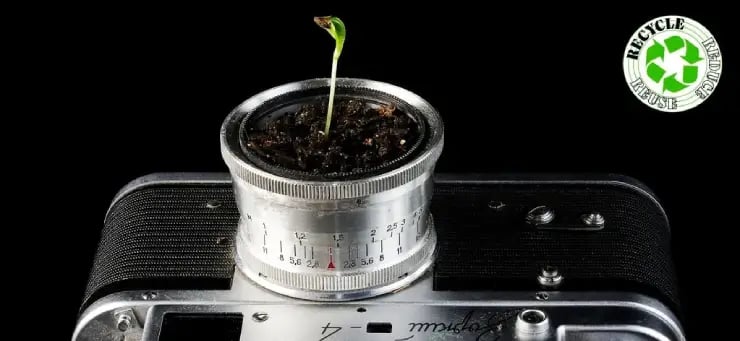Productivity is probably the main keyword in growth theory. Expressed as a mathematical function it describes the proportion between increases in output per input unit. Obviously there is a close connection to the input output analysis, mainly developed by the economist Wassily Leontief.
A growth in productivity, a essential precondition for economic success, can be achieved by more efficient work process flows. Transfering this into target system increasing productivity is the overall target with a growth in efficiency as a measure to achieve this objective. In this context I would like to draw the attention to Prof. Dr. Michael Braungart, inventor of the Cradle-to-Cradle® concept. In his presentations on that method he never gets tired pointing out the lacking ability of efficiency to improve both process and business success. Humanity is, he always likes to note, most efficient when not consuming anything or in other words when non-existent. That is why he criticizes the idea of growing efficiency within the production and calls for more quality in processes and production.
Not the highest quality but the quality required by the consumers
Product quality is mainly a property attributed by consumers. Thus, successful companies do not produce and offer the highest quality but the quality required by the consumers. Even though quality is a subjective consumer’s opinion a few general attributes can be stated out by distinguishing between neutral and evaluated quality.
Neutral and Evaluated Quality – A standard is the fundamental basis for product quality
Neutral quality factors are often represented by norms and standards. It seems somehow irritating to lump quality and standard together due to our understanding of quality as something outstanding. But as said above quality does not necessarily have to be outstanding but fitting to the customers’ requirements. By setting norms and standards neutral quality can be detached from the overall quality factor as a sum of general and subjective attributes. Conversely, this also means: A standard is the fundamental basis for product quality. Therefore, the more important it is in today’s business to comply with both mandatory and voluntary norms, such as the ISO 14001 or the PAS 2050. Attentive readers have surely recognized this norms being standards for environmental issues. Why do I think these norms are important to quality, efficiency and finally to productivity?
Facing the Requirements – Price, Service & Environmental Impact
Trying to reduce consumers’ requirements to three main issues I would recommend the following categories. Of course, price is still one of the main factors influencing the buying decision. Besides that, service has become very decisive especially over last years. This is accompanied by something that can be named as image or responsibility even though both expressions are not best fitting for these aspects. Environmental questions take up considerable space in this third aspect. The consumer’s awareness of those questions is driven by news on global catastrophes, climate change or scarcity of resources. Admittedly, without these developments probably just a very few would think about the environmental impact of consumption. But happily more and more do think about it or the other way around, sadly, we all have to think about our consumption behavior. Thus, environmental issues influence both the neutral and the evaluated quality of a product.
Increasing Material or Resource Productivity to improve Environmental Performance
At this year’s Umberto User Workshop in Berlin I had the chance to learn about exiting projects covering exactly these issues by applying life cycle assessment, carbon footprinting or process modeling and optimization for more resource productivity. For instance, an example of the chemical industry by Dr. Nikolaus Thißen of Bayer Technologies Services showed how to use the pollutant “halogenated hydrocarbon” as raw material and therefore completely reuse it in the production process. By this new strategy the deployment of a waste air treatment facility became obsolete and, even more impressive, the whole process at this stage became emission free. Also interesting in this context was the capacity analysis presented by Martin Schottler of Arcade Process Engineering GmbH. The accompanying presentations can be downloaded at the ifu Download Center after registration.
The reuse of waste is a good example for increasing material or resource productivity because of the chance to achieve the same output level with less material use or by a substitution of materials. By both improving the environmental performance of a product and more efficiency an attractive product can be offered at appropriate quality and price.
Concluding, increasing productivity should be the key issue of production processes because it covers questions on quality and includes efficiency as a necessary condition.
Article image by andriux-uk





